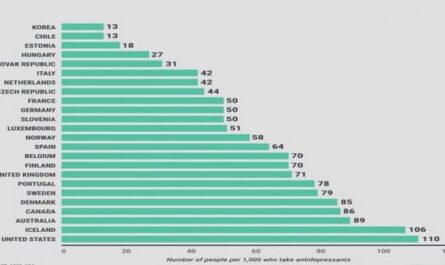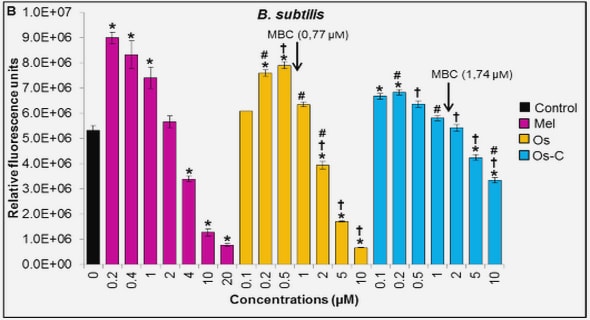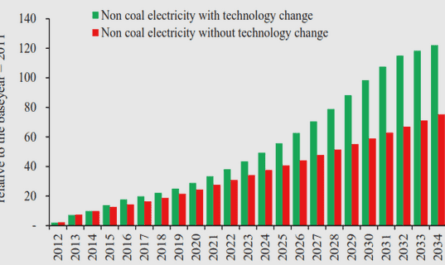Get Complete Project Material File(s) Now! »
Glycerol: an over-produced building block
The fast-growing market of biodiesel
Over the last decade, many countries as European Union (EU) member states or the United States of America (USA) have adopted policies in favor of renewable energies. Due to the high petroleum prices and to limit their environmental footprint related to its use as fuel, these countries have favored the development of alternatives fuels for transportation. Since the Energy Policy Act of 1992, the USA have promoted the production of biofuels through tax incentives [11], which have in turn developed the market of corn-based biofuels (e.g. ethanol or biodiesel). In the Energy Independence and Security Act of 2007, the USA have confirmed their will to promote bio-based fuels by setting a target volume of 140 109 L/year by 2022, including 80 109 L/year of non-corn-based biofuels [12]. Similarly, the EU has supported the biofuel industry since 2001 [13] and has now fixed a target value of 10 % for biofuels in the total fuel mix in the Member States by 2020 [14], with a maximum of 7 % of first generation biofuels (i.e. based on starch, sugar, animal fats and vegetable oil) [15]. As a result, the global biofuel production has boomed since the 2000’s with a substantial increase of biodiesel production from 2.2 to 30.1 109 L/year in 2004 and 2015 respectively (see Figure 1-1) [16,17].
Biodiesel is a first generation biofuel which is mainly produced from transesterification of triglycerides such as rapeseed, palm, soybean and sunflower oils [18]. This reaction consists in the esterification of triglycerides issued from vegetable oil or animal fats with an alcohol (e.g. methanol) in presence of alkali or acid catalysts [18–20]. When methanol is used, transesterification yields to methyl esters (i.e. biodiesel) and glycerol as major by-product (see Table 1-1 and Figure 1-2). In such reaction, about 100 kg of glycerol is produced per ton of biodiesel [18,21].
In addition, glycerol is obtained from four different processes: soap manufacture, fatty acid production, fatty ester production and microbial fermentation [18]. Production of glycerol from these four processes has been very stable since many decades and represents about 1.106 t. Since the 2000’s and the biodiesel production boom, crude glycerol production has exponentially increased (see Figure 1-3) and may reach up to 5.106 t in 2020, with more than 70 % of its production originating from the biodiesel industry [22,23]. In response to this oversupply, crude glycerol price has dropped from about 0.45 to 0.10 US $/kg in 2001 and 2011, respectively [22]. However, the glycerol market is in transition and the crude glycerol market price is subject to fluctuations [24]. The low crude glycerol prices open many opportunities for the use of this building block chemical for the production of value-added molecules. As the production costs are one of the main problems associated with biofuels production , finding new valorization way for crude glycerol is today required to make biodiesel production more sustainable .
Existing strategies for glycerol utilization and conversion
Glycerol purification and utilization
A first way to valorize crude glycerol is through its purification to reach purities above 99 % for further utilization in the food, cosmetic or pharmaceutical industries [18]. The composition of the crude glycerol issued from biodiesel production can strongly vary depending on the biodiesel process. It typically contains 20-90 %w/w of glycerol and a large part of residual methanol that could represent up to 32 %w/w [26]. The transesterification catalysts (e.g. NaOH, KOH) can also be found in significant amounts (up to 5 %w/w). The other constituents of crude glycerol are mainly water, unreacted mono/di/triglycerides and methyl esters [22]. [26]. In the first stage (neutralization), a strong acid is added to convert soaps into free fatty acids and neutralize the residual base catalyst. After this operation, the crude glycerol solution is constituted of three layers: (i) a top phase rich in fatty acids and methyl esters, which can be easily removed, (ii) a middle phase containing glycerol, water and methanol, and (iii) a bottom phase constituted of insoluble salts. In a second step, the remaining methanol is removed from the middle layer obtained in the first step using vacuum evaporation. Water is also evaporated during this step.
After the second step, the glycerol solution typically contains about 85 % w/w of glycerol [27]. Different technologies have been developed to reach a glycerol purity higher than 95 % w/w: vacuum distillation, membrane separation and activated carbon adsorption [26]. Vacuum distillation is the most used method and can yield glycerol of high purity (about 95.5 % w/w [27]) but requires intensive energy supply as glycerol boiling point at atmospheric pressure is 290 °C [22]. Membrane separation techniques require much lower energy input and can be used to obtain also very high glycerol purity (up to 99 % w/w [26]). However, these techniques face severe limitations related to the fooling and the low durability of the membranes [26]. The activated carbon method is mainly used as a finalization step to adsorb the remaining dissolved small molecules and reduce both color and odors from the final glycerol solution [26]. Overall, the crude glycerol purification costs depend on the initial composition of the by-product solution issued from the biodiesel stream. A study from 2011 estimated that the cost of a glycerol purification to a minimum of 98 % w/w was at least 0.15 US $/kg [22]. In the same year, high purity glycerol (>99.5 %) was sold at less than 0.50 US $/kg [22]. Thus the valorization of crude glycerol into high purity glycerol is of limited relevance and may be economically viable only for biodiesel streams containing high glycerol content (e.g. from sunflower oil [26]).
Glycerol conversion
Interestingly, glycerol represents also a feedstock for the generation of many chemicals with a wide range of applications [28]. Sofiprotéol, as a major actor of the biodiesel industry, provided in 2010 a list of glycerol derivatives having the highest economic interests (see Figure 1-5). Some of these value-added products are mainly obtained by chemical routes, such as glycerol carbonate (carboxylation) or acrylic acid (dehydration). Glycerol carbonate has wild applications such as the production of gas separation membrane or polymer synthesis [23]. Acrylic acid is also a building block that can be used in paints, coatings and plastics. The global demand for acrylic acid was about 1.1 106 t in 2010 with prices fluctuating between 1.1 and 2.5 US $/kg [28].
Other compounds such as succinic acid, propylene glycol (1,2-propanediol), dihydroxyacetone (DHA) and 1,3-propanediol (PDO) can be obtained by glycerol fermentation and present major interest for their high value and wild application [28]. Within these compounds, PDO has gained a particular interest as it can be used for the production of polytrimethylene terephthalate (PTT) which is a polymer used in the textile industry [20]. PDO has also other utilities such as for the production of adhesives, solvents, and have recently been approved for food applications. In the following section, the PDO market will be presented along with the different existing methods used for its production.
1,3-propanediol market and means of production
PDO market
Historically, PDO production was fossil-based and its production requires costly processes. Before the 2000’s, the price for PDO was about 30 US $/kg [29]. In the early 2000’s, Dupont Tate & Lyle Bio Products developed a glucose-based production of PDO by fermentation which reduced drastically the production costs. As a result, fermentation out-competed the petroleum-based processes and PDO price decreased to a value of 2.61 US $/kg in 2012 (see Table 1-2) while being entirely bio-based [30,31]. The low cost of PDO have in turn favored the PTT production by DuPont (SORONA™) and Shell (CORTERRA™), used in the carpet industry, textile fibers, thermoplastics, films, automobiles, apparel and coatings [20,32]. Thus the demand for PDO had increased every year, from 60.2 to 128 kt/year in 2012 and 2015 respectively. A market study have predicted that the demand would reach up to 150 kt/year by 2019 with a PDO price slight increase to 3.73 US $/kg [20].
Different processes for PDO production
Several PDO production processes already exist and are using not only glycerol as raw material but also glucose or petroleum derivatives (see Figure 1-6). Historically, PDO was synthetized from acrolein or ethylene oxide (petroleum derivatives). The ethylene oxide route was developed by Shell Chemical Company and consisted in a two-step reaction [20,33]. First, ethylene oxide reacts with carbon monoxide and a catalyst to produce a hydroxyl-aldehyde. The latter is then reduced to PDO by hydrogenation. Conversion yields of 0.90 mol/mol have been achieved via this hydroformylation route. However the final PDO solution contains many impurities (up to ten times the level of impurities than PDO derived from fermentation processes [20,33]), thus increasing the downstream process and overall production costs. PDO production from acrolein was proposed by Degussa and DuPont and consisted in the hydration of acrolein into 3-hydroxypropanal which is hydrogenolyzed in a second step to form PDO. Yields of such global reaction can reach up to 0.80 mol/mol [20,33]. Both of these routes have the disadvantage to consume petroleum-derived materials. Thus, other pathways using renewable materials as primary reactant have more recently been developed.
A chemical route consists in the hydrogenolysis of glycerol [20,34]. For that, glycerol is first dehydrated to form 3-hydroxypropanal which is subsequently hydrogenolyzed into PDO through the Degussa-Dupont route. The best yield obtained so far is 0.66 mol/mol with Pt-based catalyst [34]. In addition to the use of costly catalysts, this route requires high pressure (5.0–32.0MPa) and high temperature which limit the economic feasibility of the process [20]. Another catalytic pathway for the production of PDO from glycerol and H2 has recently been proposed based on the use of enzymes [35]. The conversion was successfully implemented using two modules: a first module constituted of glycerol dehydratase and NADPH-dependent PDO dehydrogenase was able to convert glycerol into PDO by consuming one NADPH. In the second module, a hydrogenase regenerated the NADPH while consuming H2. Via this pathway, a very high 1,3-PDO yield of about 0.95 mol/mol was achieved [35]. However, severe limitations related to enzymes stability and production costs have to be addressed before any implementation at industrial scale. Although these two routes (i.e. hydrogenolysis and enzymatic conversion of glycerol) may become an economically viable alternative for PDO production in the future, fermentation is nowadays the cheapest way to produce PDO.
Fermentation presents several advantages, such as the possibility to be carried out at physiological temperature (37°C) and atmospheric pressure. When glycerol is used as substrate, yields between 0.50 and 0.72 mol/mol can be typically achieved. However, a large part of the actual PDO production is still based on glucose despite lower conversion yields (0.30 mol/mol) [31]. A life cycle analysis recently compared the glucose-based (corn) and fossil-based (ethylene oxide) production of PDO and concluded that the former consumes 38% less energy and emits 42% fewer greenhouse gases [36,37]. Switching from glucose to glycerol as fermentation substrate for PDO production could further decrease both production costs and environmental impacts and could help to make the biodiesel branch more sustainable. In the following sections, glycerol fermentation is presented in more details and placed in perspective with PDO production optimization.
Fermentative metabolism of glycerol
Glycerol fermentation pathways have been extensively studied in model microorganisms such as Klebsiella pneumoniae [38,39] or Clostridium butyricum [40]. For both microorganisms, similar pathways were found and can be summarized as in Figure 1-7 and Table 1-3. Glycerol can enter cells, either by diffusion or actively [41,42] to be used for both anabolism and catabolism. It is worth noticing that during glycerol fermentation, anabolism generates extra reducing equivalents as glycerol is more reduced than cell material, in average (see Equation 1-6). For this reason, all microorganisms fermenting glycerol possess at least one pathway for a net reducing equivalent dissipation: catabolism during glycerol fermentation consists in both a reductive (i.e. YNADH < 0) and an oxidative branch (i.e. YNADH ≥ 0).
In the oxidative branch, glycerol is oxidized into dihydroxyacetone and subsequently converted into pyruvate (glycolysis) while generating one mole of ATP and two moles of NADH per mole glycerol (see Equation 1-7). Then pyruvate reacts to produce various metabolites known from the fermentation of glucose. A first possibility is the lactic acid fermentation where pyruvate is converted to lactate by a lactate dehydrogenase while one NADH is consumed (Equation 1-9) [43]. One ATP can be generated by converting this lactate in propionate (acrylate pathway) with the consumption of one more NADH (Equation 1-10) [44]. Another way to produce propionate is through the succinic acid pathway in which pyruvate is converted to succinate with the consumption of one CO2 and two NADH (Equation 1-11) [43]. This succinate can be then transformed in propionate with a release of one ATP and CO2 (Equation 1-12) [45]. Some species of the Klebsiella, Enterobacter and Bacillus genera are also able to convert significant amount of pyruvate into 2,3-butanediol, a chemical of industrial interest (Equation 1-8) [46].
Table of contents :
Introduction
Fermentation du glycérol pour la production de 1,3-propanediol en culture mixte sur une large gamme de pH
Electro-fermentation du glycérol en culture mixte : effet sur la sélection de population Couplage électronique entre bactéries fermentaires et électro-actives: coculture de C. pasteurianum et G. sulfurreducens
Conclusions et perspectives
Short introduction to the manuscript
Chapter 1. Literature review
1.1 Glycerol: an over-produced building block
1.1.1 The fast-growing market of biodiesel
1.1.2 Existing strategies for glycerol utilization and conversion
1.1.3 1,3-propanediol market and means of production
1.2 Fermentative metabolism of glycerol
1.3 Optimization of PDO production by glycerol fermentation
1.3.1 PDO-producing bacteria
1.3.2 Mode of operation
1.3.3 Operating parameters
1.4 A novel tool for fermentation control: electro-fermentation
1.4.1 From microbial fuel cells to electro-fermentation
1.4.2 A novel type of BES: the electro-fermentation system (EFS)
1.4.3 Operational strategies for electro-fermentation
1.4.4 Hypothetical mechanisms of electro-fermentation
1.5 Conclusion
Chapter 2. Methods
2.1 Overview of the materials and methods
2.2 Mixed culture glycerol fermentation over a range of pH (Chapter 3)
2.2.1 Inoculum
2.2.2 Fermentation medium
2.2.3 Fermentation set-up
2.2.4 Specific techniques and calculations
2.3 Mixed culture electro-fermentation of glycerol (Chapter 4)
2.3.1 Inoculum
2.3.2 Fermentation medium
2.3.3 Fermentation and electro-fermentation set-up
2.3.4 Specific techniques and calculations
2.4 Co-culture of C. pasteurianum and G. sulfurreducens (Chapter 5)
2.4.1 Inoculum
2.4.2 Fermentation medium
2.4.3 Fermentation set-up
2.4.4 Specific techniques and calculations
2.5 Pure strain cultivation
2.5.1 Anaerobic culture medium preparation for pure strains
2.5.2 Common vitamin and trace element solutions
2.5.3 Geobacter sulfurreducens
2.5.4 Clostridium pasteurianum
2.6 Analytical chemistry methods
2.6.1 High-performance liquid chromatography (HPLC)
2.6.2 Gas chromatography (GC)
2.7 Molecular biology techniques
2.7.1 DNA Extraction
2.7.2 Real-time polymerase chain reaction (qPCR)
2.7.3 Miseq Sequencing
2.7.4 Capillary electrophoresis single-strand conformation polymorphism (CE-SSCP)
2.8 Mass balance calculations
2.8.1 General calculations
2.8.2 Biomass estimation
2.9 Statistical analysis
2.9.1 Pearson correlations
2.9.2 Mean comparisons
Chapter 3. 1,3-propanediol production from glycerol in mixed culture fermentation over a wide range of pH
3.1 Introduction
3.2 Experimental design
3.3 Results
3.3.1 Effect of pH on fermentation products
3.3.2 Comparison with theoretical yields
3.3.3 Microbial communities and growth
3.3.4 Correlations between microbial community and fermentation patterns
3.4 Discussion
3.4.1 Effect of pH on microbial population
3.4.2 pH-induced H2/Formate shift
3.4.3 Ethanol production
3.4.4 Towards high PDO concentrations
3.5 Conclusion
Chapter 4. Electro-fermentation triggering population selection in mixed culture glycerol fermentation
4.1 Introduction
4.2 Experimental design
4.3 Results
4.3.1 Impact of electro-fermentation on metabolic patterns
4.3.2 The addition of Geobacter sulfurreducens increased PDO production
4.3.3 Microbial communities in the bulk
4.3.4 Non-turnover cyclic voltammetry
4.3.5 Population selection on G. sulfurreducens pre-colonized electrodes
4.3.6 Estimated metabolic patterns and clustering of the OTUs
4.3.7 Model accuracy and robustness
4.4 Discussion
4.4.1 Clostridium celerecrescens as a potential electro-fermentative bacteria
4.4.2 Selection effect versus individual metabolic shift
4.4.3 Electro-fermentation: towards a better PDO production
4.5 Conclusions
Chapter 5. Electronic interactions between fermentative and electro-active bacteria: co-culture of C. pasteurianum and G. sulfurreducens
5.1 Introduction
5.2 Experimental design
5.3 Results
5.3.1 Growth of G. sulfurreducens and C. pasteurianum in co-cultures
5.3.2 Metabolic patterns shifted during co-cultures
5.3.3 Metabolic shift of C. pasteurianum
5.3.4 Effect of G. sulfurreducens growth on C. pasteurianum production yields
5.4 Discussion
5.4.1 G. sulfurreducens using C. pasteurianum as sole electron acceptor
5.4.2 Is nanowire expression the key for DIET?
5.5 Conclusion
Conclusions & perspectives
Mixed culture fermentation for the production of value-added chemicals
Electromicrobiology as a new approach to conduct biotechnologies
Opportunities for electro-fermentation
Appendix A: Metabolite recycling
Bibliography


